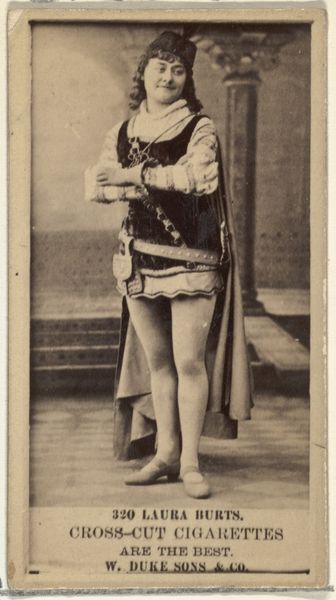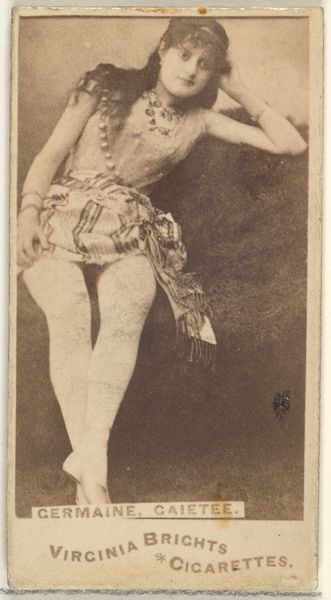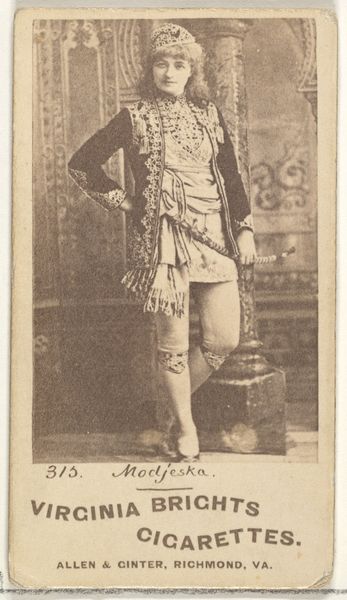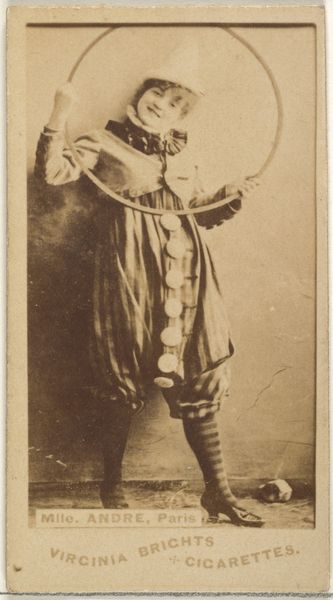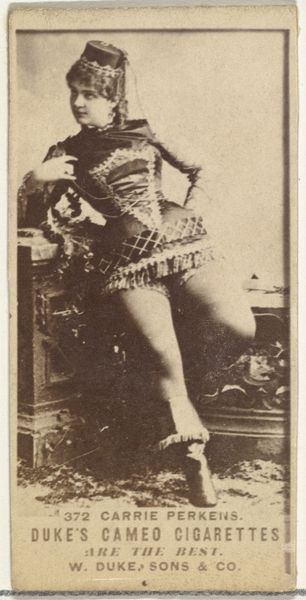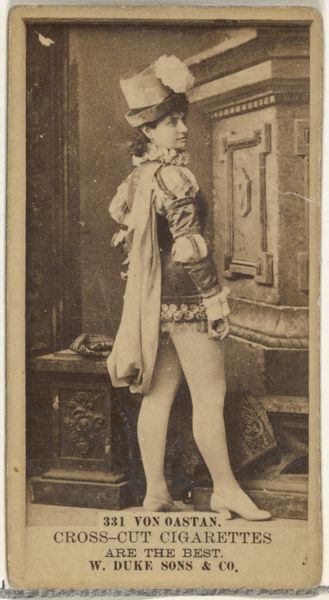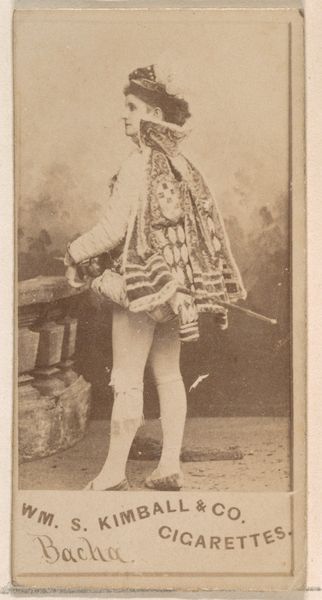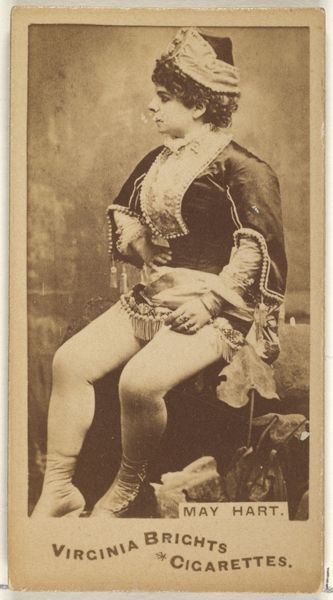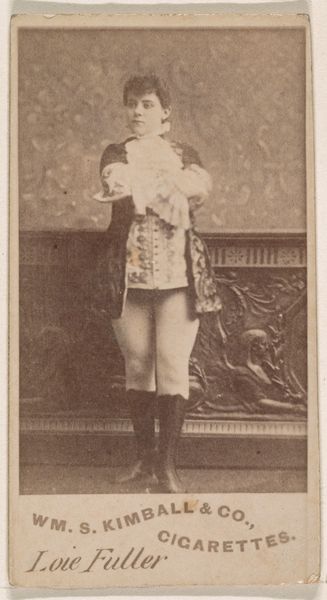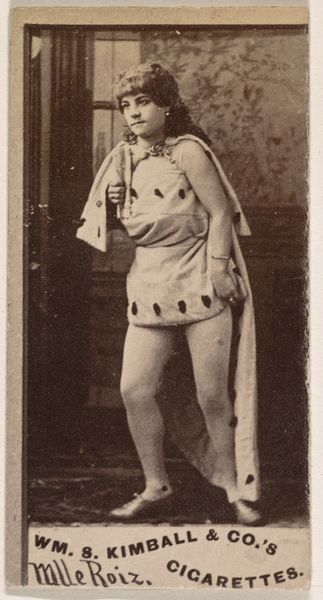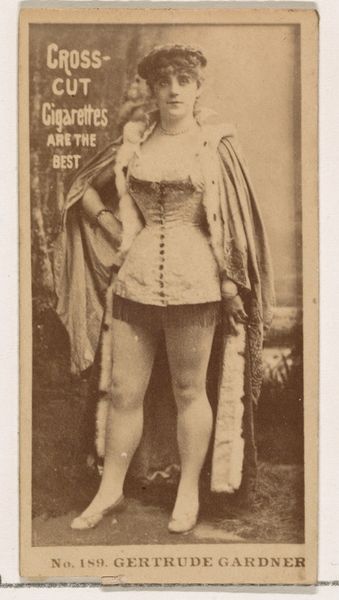
Geraldine Uhner and C. Pounds, from the Actors and Actresses series (N171) for Gypsy Queen Cigarettes 1886 - 1890
0:00
0:00
drawing, print, photography
#
portrait
#
drawing
# print
#
photography
#
orientalism
#
19th century
#
men
Dimensions: sheet: 2 11/16 x 1 3/8 in. (6.9 x 3.5 cm)
Copyright: Public Domain
Curator: What strikes you first about this piece? It’s a photograph titled "Geraldine Uhner and C. Pounds" dating from around 1886-1890, originally produced by Goodwin & Company as part of their "Actors and Actresses" series for Gypsy Queen Cigarettes. Editor: The pose, undeniably. The power dynamic jumps out. Is that… intentional? The figure standing appears dominant, almost performatively so, while the person beneath is in a very subservient position. It raises immediate questions about the context and the message being conveyed. Curator: Absolutely, that is precisely what made it captivating to audiences. It's fascinating to view it now because it encapsulates and reinforces those Victorian era attitudes about social roles and performances of power through "orientalism", and moreover as these roles appear through stage acting in the theatre. How are identities constructed and performed through symbolism and ritualized posture? Editor: The Orientalist themes definitely complicate the reading. What are they trying to evoke with these stage costumes? Are they trying to reference, parody, or appropriate Japanese culture? Because the costuming and gesture can be seen to perpetuate racist ideas. It speaks to how art can both reflect and actively shape problematic cultural perceptions. Curator: Precisely. As such, the performance would've signaled various accepted associations. The fan is a very charged signifier and an accepted motif and would function alongside the rest of the attire in a very conscious symbolic grammar that would influence the reading. As the images began circulating en masse within popular advertising, these signs became more concretized as social and political narratives. Editor: And by disseminating these images through something as quotidian as cigarette cards, it further entrenches those skewed perceptions within everyday life. It’s a reminder of the insidious ways that dominant narratives can be normalized and commercialized, even glamorized. It's chilling, how commonplace something like this once was. Curator: Indeed. When we examine pieces like this today, it invites a deeper introspection, particularly concerning how historical media like cigarette card portraiture both shape and misshape our perception of culture, gender, and power. It encourages examination. Editor: It makes you realize that confronting the problematic elements within past aesthetics can give power in shaping present-day discourse. I think it's interesting that something created to sell cigarettes opens these wider reflections today.
Comments
No comments
Be the first to comment and join the conversation on the ultimate creative platform.
